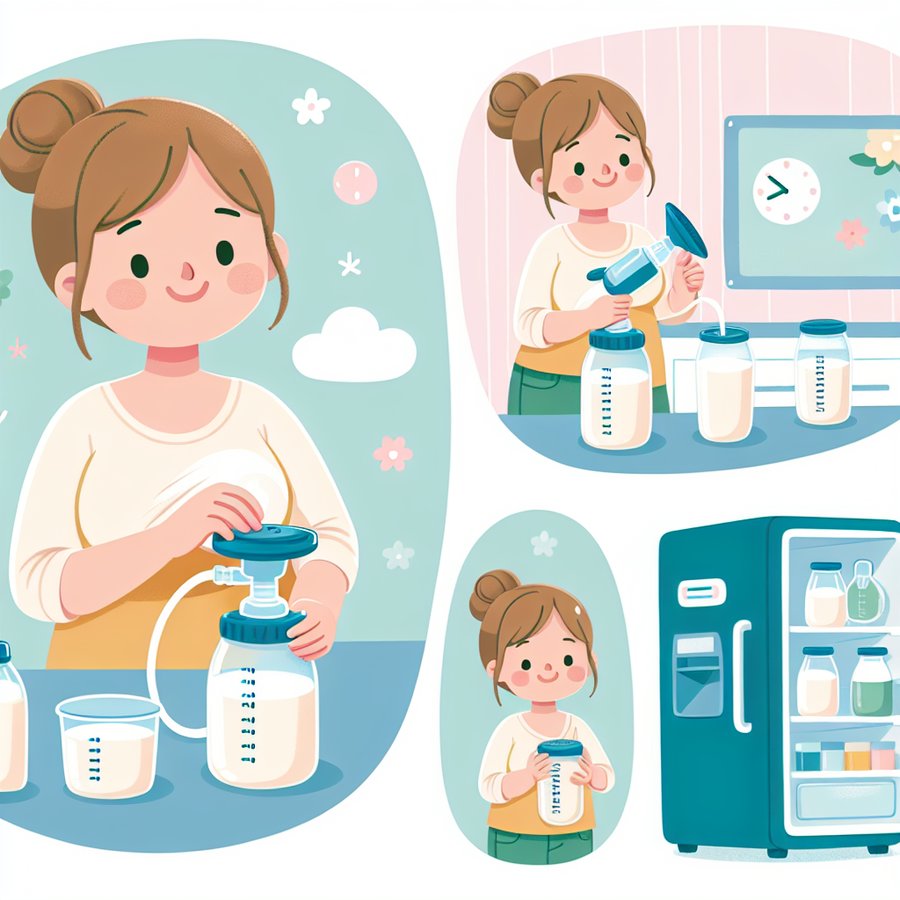Handling and storing expressed breast milk safely is paramount for the health and nourishment of your precious little one. The process can seem daunting, but with the right knowledge and techniques, it becomes an effortless part of your daily routine. This article aims to provide comprehensive insights into the best practices for preserving the quality and safety of your expressed breast milk.
Understanding the Basics of Expressed Breast Milk
Expressed breast milk is a wonderful way for mothers to continue providing their babies with the best possible nutrition, even when they are not around to breastfeed directly. It involves the process of extracting milk from the breasts using either a manual or electric breast pump and then storing it for later use.
One of the key factors in ensuring the health benefits of expressed milk are retained is proper handling and storage. This includes understanding the guidelines for how long breast milk can be safely stored in different environments and containers.
Handling and Storing Expressed Breast Milk Safely
For many mothers, expressing breast milk is a necessity, whether due to returning to work or simply needing a break. However, it’s crucial that this milk is handled and stored correctly to maintain its nutritional and immunological benefits. The following tips outline best practices for managing this process.
Firstly, always ensure your hands and equipment are clean before expressing milk. This helps prevent contamination. Once expressed, breast milk should be stored in clean, food-grade containers with tight-fitting lids. Glass bottles or BPA-free plastic containers specifically designed for breast milk storage are ideal choices.
Secondly, labeling is crucial. Always mark containers with the date the milk was expressed. This ensures you use the oldest milk first and avoid wasting any. For healthy, full-term babies, the CDC recommends storing breast milk at room temperature for up to 4 hours, in the refrigerator for up to 4 days, and in the freezer for about 6 months for optimal quality.
Maximizing the Nutritional Value of Stored Breast Milk
Maintaining the nutritional and immunological value of expressed breast milk during storage is vital. Freezing breast milk can cause a slight decrease in some of its protective components, but it still remains more beneficial compared to formula. To maximize its benefits, thaw frozen milk in the refrigerator or by placing it in a bowl of warm water. Avoid using a microwave as it can create hot spots that might burn your baby and degrade the milk’s quality.
When it comes to using stored breast milk, gently swirl the bottle to mix the fat that may have separated. Do not shake vigorously as this can damage some of the milk’s beneficial components. Additionally, once your baby has started feeding, use the milk within two hours and discard any leftovers to prevent bacterial growth.
For mothers needing advice on increasing breast milk supply, consider visiting Breastfeeding Tips for Mothers with Low Milk Supply, as well as exploring options like DIY Baby Food Storage and Preparation Tips for managing expressed milk efficiently. Additionally, understanding your baby’s nutritional needs is crucial, especially if you have a premature baby.
In conclusion, handling and storing expressed breast milk safely is a crucial component of feeding your baby. By following these guidelines, you can ensure your baby receives the best possible nutrition available, even when breastfeeding isn’t an option. For more tips and advice on navigating the journey of motherhood, be sure to explore topics like introducing solid foods and hydration tips for breastfeeding mothers.













